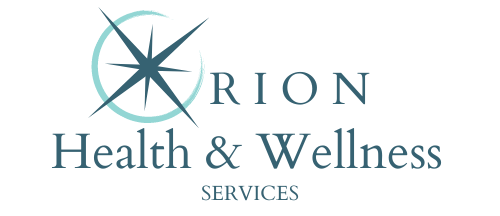Free testosterone plays a major role in how the body functions every day. While total testosterone gets most of the attention, it’s free testosterone that really drives energy, strength, and sexual health. Unlike bound testosterone, free testosterone isn’t attached to proteins in the blood. That means it’s ready for the body to use right away. When free testosterone levels are too low, it can lead to fatigue, mood changes, low sex drive, and even trouble with muscle growth. Because of that, understanding this form of testosterone is key—especially for men considering hormone replacement therapy or managing hormone-related health issues.
In testosterone replacement therapy (TRT), doctors often monitor both total and free testosterone levels. That’s because free testosterone is what actually interacts with your body’s cells. Even if total levels are normal, low free testosterone can still cause symptoms of testosterone deficiency.
This makes it important for anyone exploring TRT or managing hormonal balance to know the difference. Knowing your free testosterone level can give a clearer picture of how your body is really using testosterone. It helps guide personalized treatments, especially when aiming to improve overall energy, sexual health, and quality of life.
Key Takeaways
- Free testosterone is the active form of testosterone that directly supports muscle growth, sex drive, and overall energy levels.
- Unlike total testosterone, free testosterone isn’t bound to proteins—so your body can use it right away when it needs to.
- Low free testosterone can cause fatigue, low libido, and mood changes, even when total testosterone levels appear normal on tests.
- Testing both total and free testosterone gives a clearer picture of hormonal health and helps guide the right treatment plan.
- Lifestyle changes, such as better sleep, exercise, and managing stress, may naturally boost your free testosterone levels over time.
Table of Contents
Free Testosterone Explained: How It Impacts Health and Hormones
Free Testosterone Definition and Function
Free testosterone refers to the small amount of testosterone in the bloodstream that is not bound to proteins like SHBG (sex hormone-binding globulin) or albumin. While about 98% of testosterone in the body is bound to these proteins, only around 1–3% is considered “free.” This form of testosterone is biologically active, which means it can easily enter cells and directly affect tissues. It plays a critical role in maintaining muscle mass, bone density, libido, mood, and energy levels in both men and women.
Unlike total testosterone, which includes both bound and free testosterone, free testosterone gives a clearer view of what your body can actually use. This is important in diagnosing hormonal imbalances, especially when a person has symptoms of low testosterone but shows normal total testosterone on blood tests.
Since only free testosterone can bind to receptors in muscles, organs, and other tissues, it’s the most important measure when assessing testosterone function in the body.
Why Free Testosterone Levels Matter
Low levels of free testosterone can have a wide impact. Common symptoms include fatigue, low libido, decreased strength, mood swings, difficulty focusing, and increased body fat. On the other hand, having healthy levels supports sexual function, promotes lean muscle growth, and helps maintain mental clarity. These effects are especially important for men over 35, as natural testosterone production begins to decline with age.
In many hormone replacement programs, such as testosterone replacement therapy (TRT), free testosterone levels are used to guide treatment plans. Patients with symptoms of testosterone deficiency may still fall within a “normal” total testosterone range. That’s why testing for free testosterone can uncover hidden imbalances.
This is especially useful in cases where SHBG levels are high, which can reduce the amount of free testosterone available to the body.
Factors That Affect Free Testosterone Levels
Age, Lifestyle, and Hormonal Balance
Age is one of the biggest factors that influence free testosterone levels. After age 30, testosterone naturally begins to decline. For many men, this drop becomes more noticeable in their 40s and beyond. But age isn’t the only factor. Things like stress, lack of sleep, excess body fat, and poor diet can all contribute to lower free testosterone.
Medical conditions such as diabetes, thyroid issues, or pituitary gland disorders can also play a role.
High levels of SHBG can bind more testosterone, leaving less of it free. That’s why someone might have a normal total testosterone level but still feel symptoms of low T. Free testosterone testing can help clear up that confusion and point to a more accurate cause of symptoms. It’s also why doctors may test for SHBG and albumin alongside free and total testosterone to get a fuller picture.
How Free Testosterone Is Measured
Free testosterone is typically measured through blood tests. There are two main methods: direct analog immunoassay and equilibrium dialysis. The second method is considered more accurate but also more expensive.
Some providers use calculated free testosterone, which is based on total testosterone, SHBG, and albumin levels. This is often reliable and more affordable than specialized testing.
In the context of TRT, measuring free testosterone helps doctors adjust doses to ensure the patient gets just enough to relieve symptoms without raising risks. It’s also helpful in monitoring progress and making sure testosterone levels remain balanced over time.
Too much testosterone—especially if it’s unmonitored—can lead to unwanted side effects like acne, mood swings, or cardiovascular risks.
Supporting Healthy Free Testosterone Levels
While medical treatments can help increase free testosterone, many lifestyle habits also play a role. Eating a balanced diet, getting enough sleep, managing stress, and maintaining a healthy weight are all great first steps. Strength training and resistance exercise have also been shown to naturally boost testosterone levels.
Reducing alcohol intake and avoiding smoking can also support better hormonal health.
Supplements may also support testosterone balance. Some contain ingredients like zinc, magnesium, vitamin D, and ashwagandha—nutrients linked to healthy hormone levels. However, supplements should not replace medical treatment if free testosterone is very low.
Always consult a healthcare provider to figure out what’s really going on and what the best course of action is for your unique needs.
Take Charge of Your Hormone Health
Frequently Asked Questions
It’s the form of testosterone not bound to proteins and is available for the body to use.
It controls many body functions like energy, muscle strength, sex drive, and mood.
Total testosterone includes both bound and free types. Free testosterone is the active part.
Aging, stress, poor sleep, obesity, and certain medical conditions can all contribute.
Through blood tests using direct or calculated methods alongside SHBG and albumin levels.
Fatigue, low sex drive, poor focus, mood swings, and reduced muscle mass.
Yes. Exercise, sleep, stress management, and a healthy diet can help.
Yes. TRT is often prescribed when free testosterone levels are too low.
Some may help, but they should be used with guidance from a healthcare provider.
Anyone with symptoms of low T or planning to begin hormone therapy.

